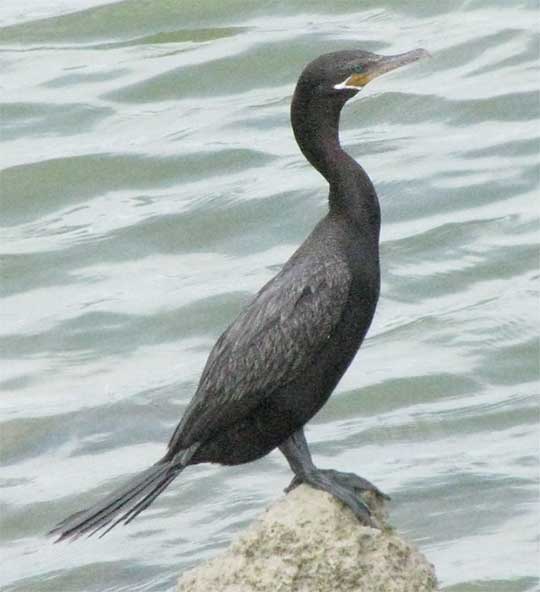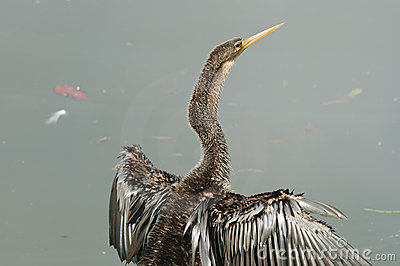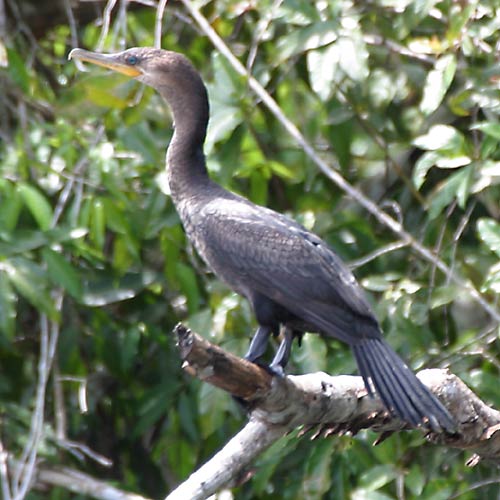
Phalacrocorax olivaceus
TAXONOMY
Pelecanus olivaceus Humboldt, 1805, banks of the Magdalena
River, Colombia. Two subspecies.
OTHER COMMON NAMES
English: Neotropic cormorant; French: Cormoran vigua; German:
Biguascharbe; Spanish: Cormorбn Biguб.
PHYSICAL CHARACTERISTICS
Body length of 25 in (63 cm), with a bright yellow bill, yellow
cheek pouch, white band behind the lower mandible, glossy
blackish plumage, black legs and feet, and males somewhat
larger than females.
DISTRIBUTION
Occurs from the U.S. Gulf of Mexico through the Caribbean,
Mexico, Central America, and almost all of South America.
HABITAT
Nests in trees near freshwater; feeds in coastal waters and in
large lakes and rivers.
BEHAVIOR
A social species that breeds in colonies and aggregates in flocks.
FEEDING ECOLOGY AND DIET
Feeds on small fish, crayfish, and other aquatic animals.
REPRODUCTIVE BIOLOGY
Lays three to four eggs in a crude stick-nest located in a tree,
with both sexes sharing the incubation (c. 30 days) and rearing
of the chick.
CONSERVATION STATUS
Not threatened. Abundant over much of its range.
SIGNIFICANCE TO HUMANS
None known.
Other popular Animals
Photo Gallery of - Olivaceous cormorant




 Animalia Life
Animalia Life